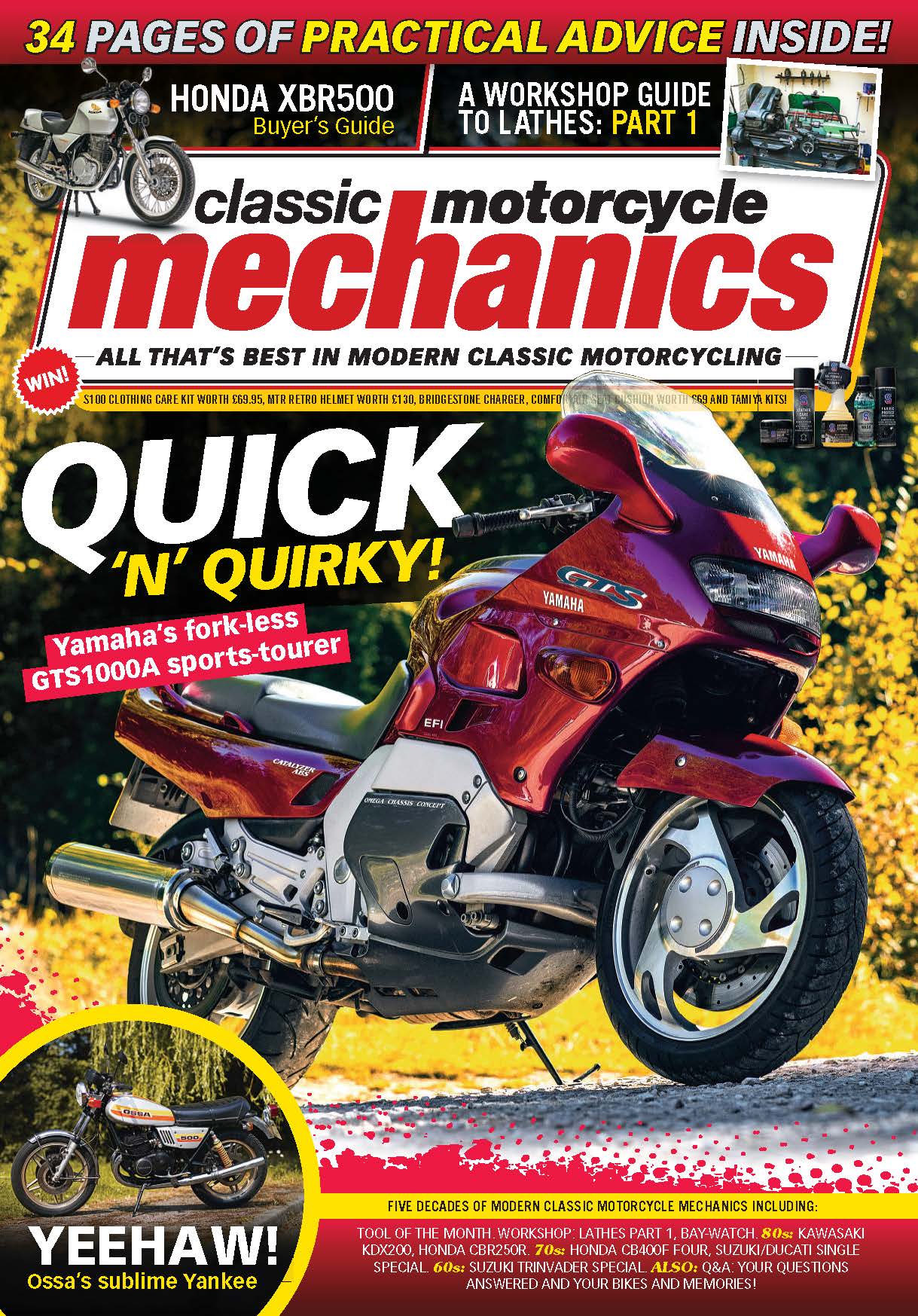Often maligned and sniggered at for its name, the Yamaha YZF600R Thundercat is actually a very good, cheap bike. Andy Bolas is the cat who’s got the cream…

Words: Andy Bolas Pics: Gary Chapman, Mortons Archive
What’s in a name? Names are important, right? Think of your own – is it a short-form? Does your mum still call you by your full name when you’ve done something wrong?
Some names are earned – our editor Bertie is actually Robert, but his evil older sister called him Bertie to wind him up and it stuck. Bikes have names, too, some great and some plain daft.
Think of the FireBlade and it conjures up something almost mythical, but in the mid-1990s Yamaha tried to play the name game and maybe it didn’t quite come off with their 1000cc and 600cc sports machines: Thunderace and Thundercat.
The subject of this month’s classic ride is the Thundercat, a name that millions of us of a certain age will attach to a kids’ cartoon show. What was Yamaha thinking? I think we’ll call it the ‘Cat’ as that sounds cooler, no?
Introduced in 1996 to much fanfare and high expectations, Yamaha’s new 600 super-sport machine was going to have to be one hell of a bike to topple the Honda CBR600F from its throne in the highly competitive middleweight category.
The Honda had been king for years but first impressions from the launch in South Africa and initial tests were looking good for the Yamaha. These were short-lived when finally tested against its peers – the Cat was more of a halfway house between the super-sporty Kawasaki ZX-6R and the sports-touring Kawasaki ZZ-R600 (still on sale alongside its sportier sibling). In many ways it was aimed very squarely at the CBR’s perfect blend of ‘sporty enough’ and ‘sports-toury enough’. Of course, Yamaha were already working on both the litre-class R1 and super-sport R6 by the time these reviews came out – and both would revolutionise their respective categories.
Under the skin of the Cat, the bike was pretty much an FZR600R (rake, trail and wheelbase are identical) but the YZF600R was definitely an improvement over the more track-orientated FZR600 it replaced for the road at least. The motor was heavily based on the previous FZR’s architecture but featured a lightweight cylinder block, forged pistons, different valve springs, bigger oil cooler, and a new four-into-two-into-one exhaust pipe to boost mid-range. Power was up on the FZR by five claimed bhp to 105 at 11,500rpm.
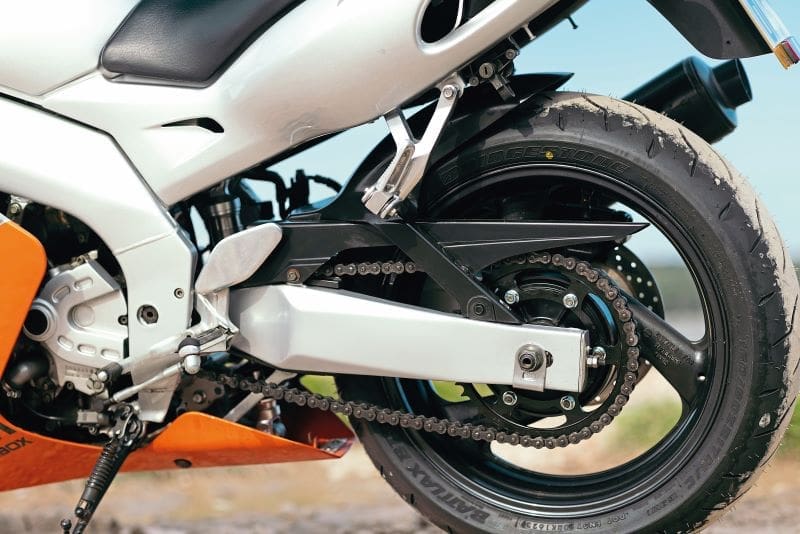
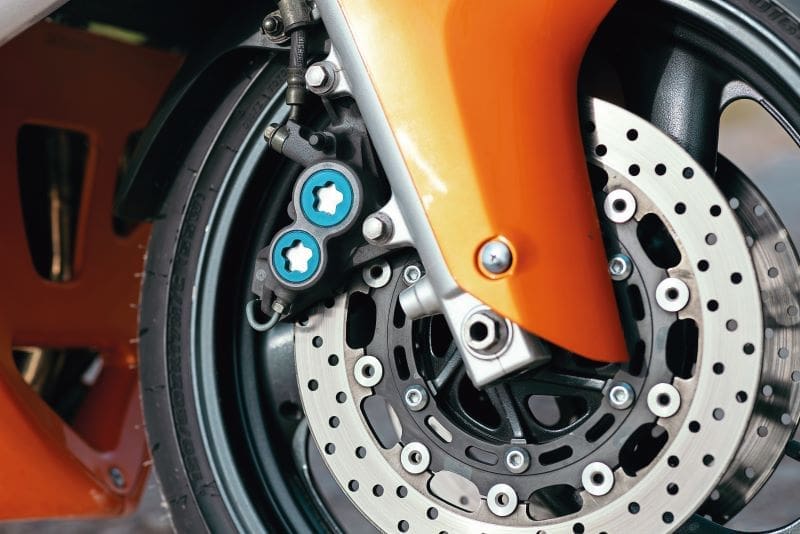


You could see where Yamaha was aiming the Cat: the bike came with a steel Deltabox frame, rather than an alloy one (the CBR of the time was also a ‘steelie’); it was pretty much the old bike’s frame but with a modified sub-frame for the different bodywork. The 41mm diameter forks were right-way-up and not inverted. Suspension as a whole was reworked over the FZR and both ends were fully adjustable for pre-load, compression and rebound. The brakes were the same excellent ‘blue-spot’ Sumitomo four-pot calipers with 298mm discs – these were the same as on the bigger Ace and were a revelation at the time, and have been used as upgrades on many specials since.
The bodywork was expansive – tests at the time said it was a pain to strip down thanks to the number of panels. Looks, well, the looks were love or loathe – a real ‘Marmite bike’ – but it was comfortable to ride and the YZF600 was two kilos (claimed) up from the FZR at 187kg.
Me? Well, I think the Thundercat still looks sharp and not too dated. Having a long production run from 1996 to 2004 with little other than colour changes says a lot about the bike’s abilities in the real world. The engine feels like it has more low-down grunt than the CBR and also like the ZX-6, it produces a wonderful grumbly induction noise through that front-end snout…
At the time the super-sport class was about performance and to be fair the Thundercat has more than enough performance and handling for most of us, especially on the road which is where most of us will be using it.
That said, you can make most bikes work on track if you throw enough cash at them, can’t you? In fact, the Belgarda Yamaha team did well with the Thundercat in the European Supersports Championship and was vying for the title.
Our test bike has received a minor makeover by myself and is looking absolutely stunning with its paint literally popping in the sun. Looking around the Thundercat makes you realise that things have progressed quite a lot over the last 20-odd years. I think the main thing to date the Cat is probably its big comfy dual seat and the clocks look very old and uninspiring now – but on the whole, I really like how it looks, so let’s head out for a ride.
First thing you notice when you swing a leg over the Cat is how comfortable the 805mm high seat is. Under the seat is generous, too, with room for a U-lock and a bit more besides. That lovely seat combined with the position of the pegs and bars means it feels like you could do some serious distance and not get your destination walking like you have had a full body cavity search by a gorilla!
Out on the road the engine is a gem with such a broad spread of power which progressively builds from quite low down in the rev-range. Then you hit 7500rpm and you get a step up where we’re right in the power and the Thundercat is happy revving all the way to its 12,000rpm red-line while still producing power rather than hitting a brick wall like some bikes. The motor is great in the real world; it’s not fickle and peaky or difficult to get the best out of it, which is more impressive when you realise that is just a development of the old FZR motor. When Yamaha got that extra power, they also gave it more driveability to boot…
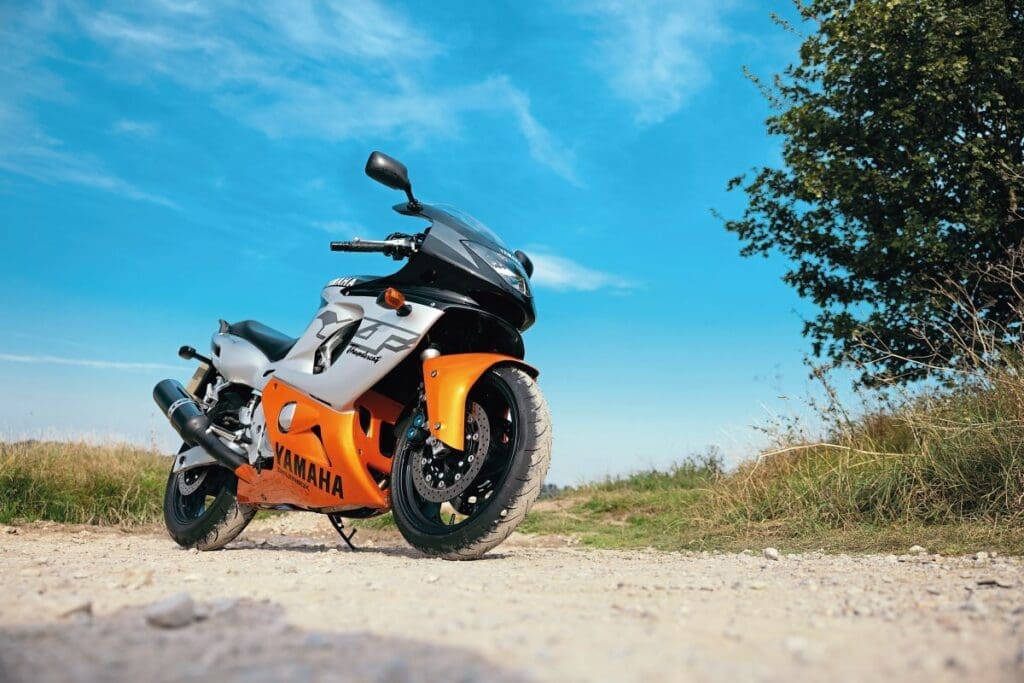
If there’s a negative here, it’s the buzzy patch between five and 6000rpm, but if you cruise above or below this you won’t be getting tingly fingers or buzzy mirrors. The mirrors are also worth a mention as they actually do what they are meant to do and allow you to see what’s going on behind you instead of just seeing your elbows.
The clutch, which was always a bit of a weak point on 1980s and 1990s Yamahas, is no different on this one and can get a bit grabby, especially when it’s hot. To be fair, if you’re not being too spirited with your launches from the lights, it’s not that noticeable and if you don’t abuse your machines (let’s face it, we’re older/wiser now) you probably won’t ever notice anything. Changing gear can be a little clunky at lower speeds around town but not really any worse than a just as old CBR600. The riding position reminds me a little of the ZZ-R600: it’s so comfy and roomy, the wind protection is brilliant, and I feel like I could ride for ages before needing to have a break. Handy a s the 19-litre tank would probably see you to around 150-170 miles before the fuel light (no reserve switch) comes on…
I’m really starting to enjoy this bike and all the comfort and handling it has under the bodywork. The bike isn’t showing any of the softness normally associated in the handling department either. This could be because the front suspension has been set up slightly stiffer than standard and I have installed one of Hagon’s finest rear shocks to replace the worn-out Yamaha unit to keep the rear end under control. This bike rides as good, if not better, than the day it was ridden out of the showroom and is a real credit to Tony Hutchison of Hagon who has owned the bike for a good while.
We mentioned the brakes and they are far superior to the FZR600R it replaced AND superior to the competition of the time. Little wonder they hung around on the Ace, the R1 and Fazer models…
You know what, I know the name was ridiculed and the bike dismissed as being a ‘soft option super-sport’ but the Cat is a brilliant all-rounder which is at its happiest commuting and touring with the odd bit of back road scratching thrown in (when the suspension is sorted!) Yup, it can do that as Tony even took it around Brands Hatch and said it was as good as anything else he had ridden.

I guess the reason the Thundercat wasn’t a sales success and didn’t topple the CBR600F from the top of the pile was because although it was a bloody good road bike the CBR was all that and a little more plus it could win championships, too, and that was what helped sell bikes back then and Honda’s build quality in the 1990s was a cut above…
Back in the day I guess the lack of an alloy Deltabox frame and normal forks kept the price down: the Cat on release was the same price as Honda’s CBR600F at £6995 while Kawasaki’s ZX-6R was a little more expensive at £7195. The YZF Cat had a long production run with only colour changes and the silencer changed from a silver sleeve to a black chrome one on the later bikes.
Today if you search eBay for a Thundercat (do ask for the bike, not the cartoon show) you’ll be happy to see them start around a grand for something not too shabby, going up to £2500 for a really nice one. Just try to avoid anything that looks like it’s been crashed through the anodised accessories catalogue from 1998…
Issues are few, really. You need to watch out for corrosion on the swingarm (behind the hugger) as if left long enough you might get holes in the metal work. Worn-out rear shocks and rotten down-pipes (our test bike has stainless down pipes from Delkevic) are also bad things. Other issues like cracked bodywork or damaged graphics need to be looked at carefully as the majority of plastics are discontinued, as are the graphics.
A major mechanical issue seems to be the front sprocket nut coming off with the obvious catastrophic conclusion of at worse you being thrown from the bike and the possibility of engine damage, too, especially if the chain hits the crank cases.
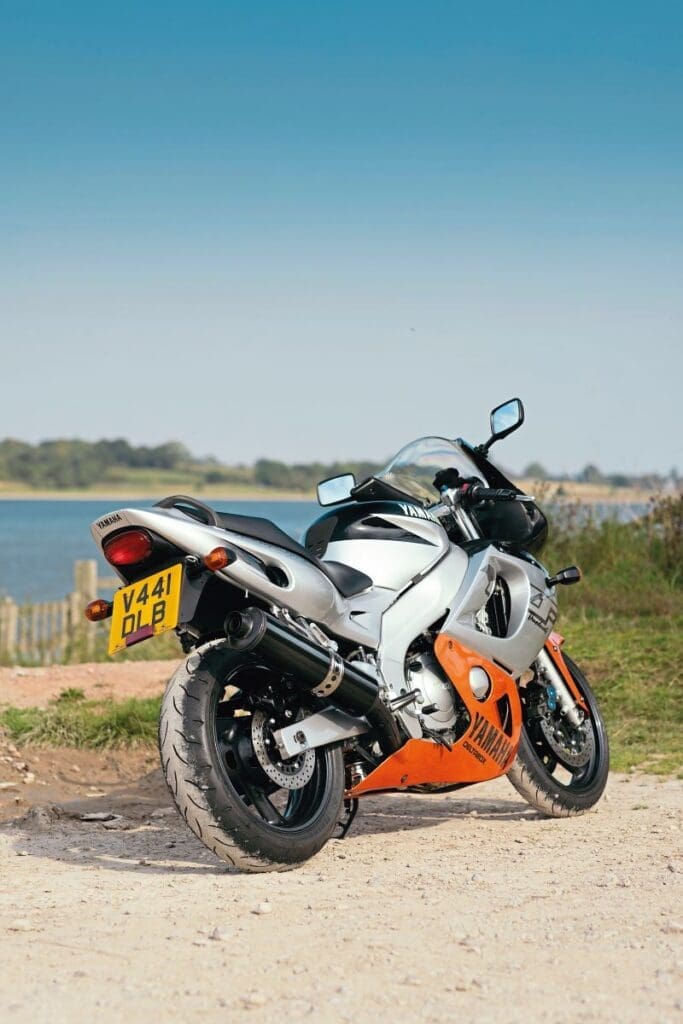
This happens because the original retaining nut on the front sprocket is very shallow. I think the original part has been superseded to a deeper nut or you can just fit the original with a dab of thread lock if you are really worried about this.
Looking at the bike, I’d say eight out of 10 Cats have had good owners (see what I did there) in comparison to nutter owners who’d buy a GSX-R600, R6 or an SRAD. So the chances are it won’t have been abused and spent most of its life on the back wheel.
I reckon that with prices now being so low you can balance the fact that – if you take the plunge – you’re not going to lose a bean.
Okay, I admit that I don’t think the Thundercat will ever be hugely desirable, but it’s a great bike with no major foibles and is a good way to access the modern classic scene.
So, if you buy right you’ll have a hugely competent bike that won’t lose much if anything at all in value…
I own this one – Tony Hutchison

“I first laid eyes on this bike when my long-term mate Paul rode back from the showroom after picking it up and I knew then that I just had to have the bike. I said to my neighbour if you ever wanted to sell this bike let me know and I’d have it. Which he did and the Thundercat has been in my custody for over 20 years and I’ll never part with it. I have known the bike from day one and I absolutely love it, it’s just like a comfortable pair of slippers and does everything I need it to. I have it regularly maintained and serviced even though one year I’m ashamed to admit I only managed to cover 32 miles due to work and off-road racing commitments. I have recently had CMM’s Andy Bolas give the bike a little cosmetic makeover just to keep things looking sharp and I’m over the moon with the results. The bike had started to slightly deteriorate with the swingarm being a little rusty along with some of the fasteners, and the rear shock had died (lucky for me I work for Hagon suspension!). The bike has only been out in the rain once in its 20-odd years, which was when I was an outrider at a friend’s funeral and I think he would have been looking down laughing his socks off!”
Specifications
Engine: 599cc, four-stroke, liquid-cooled, DOHC, 16-valve, four cylinder
Max power: 96bhp @ 11,500rpm (claimed 105bhp)
Max torque: 65.7Nm @ 9500rpm
Transmission: 6-speed
Final drive: Chain
Suspension
Front – 41mm forks adjustable for pre-load, rebound and compression damping
Rear – Mono-shock adjustable for pre-load, rebound and compression damping
Brakes
Front – Twin 298mm discs with four piston calipers.
Rear – 245mm disc with twin opposed piston caliper
Tyres
Front – 120-70-17
Rear – 160-60-17
Seat height: 760mm
Wheel base: 1415mm
Dry weight: 187kg
Fuel capacity: 19 litres

